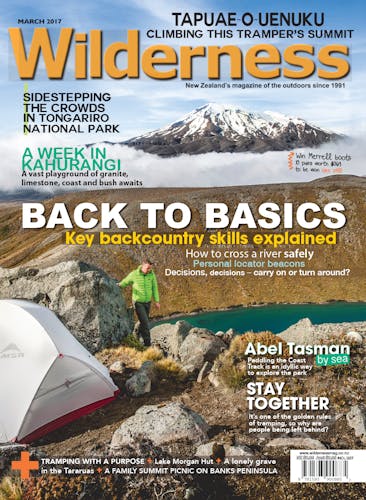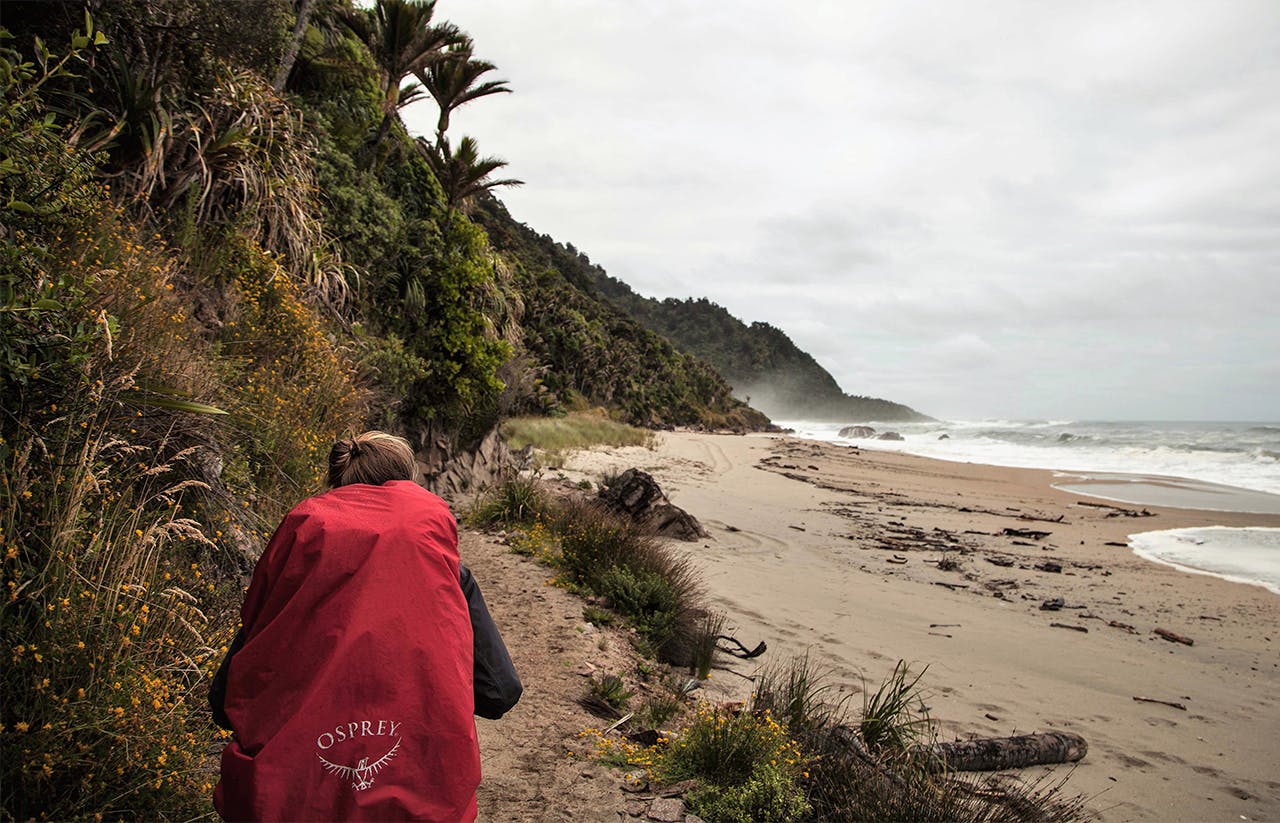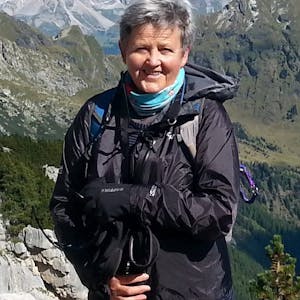Explore the four corners of NZ’s second-largest national park.
To readers who know Kahurangi well, this ‘perfect week’ will be notable as much for what isn’t included. Such is the scope of this park, second in size only to the massive, 1.2 million hectare Fiordland, and protecting a swathe of geological and biological diversity across the north-west corner of the South Island, there is simply not room for everything.
Kahurangi, established in 1986, is our second newest park, its formation notable for the diversities of landscapes and ecologies it protects. This was a shift from the first national parks, where scenic grandeur was perhaps a more important consideration for endowing such worthy status.
The name Kahurangi, meaning ‘treasured possession’, is apt. The park is a treasure land of marbled kaarst and glaciated mountains, tussock tablelands and downs, beech and coastal rainforests, rivers, ancient rocks and fossils, caves and sinkholes. And then there’s the wildlife: the park is a stronghold for great spotted kiwi, the home of blue duck/whio, kaka, kakariki, kea, more than half of New Zealand’s 40 species of land snails, and New Zealand’s largest spider, the spelungula, which lurks underground in Kahurangi’s immense cave systems, among the deepest and longest in the Southern Hemisphere.
With so much to explore, the region has long been recognised for its recreational opportunities. Included here is a mix, from easy walking to challenging expeditions, from hot favourites to lesser known yet worthy adventures.
Coast along the (Heaphy) coast
Possibly you’ve been one of those walkers, or bikers, who rushed through the stunning coastal stretch of the Heaphy Track with barely a glance, anxious to meet your transport at the track’s end. Go back. Slow down. Take a day walk to Scotts Beach (45 minutes) or Katipo Creek campsite (2-3hr). Better still, stay overnight at Heaphy Hut (5hr, remember to book). DOC has realigned parts of the track that were vulnerable to the surging West Coast surf. So, relax. Enjoy the weathered headlands, the nikau forest, all tangled with vines. Search for orchids; greenhoods, gastrodias, spider, potato or Earina Autumnalis. Watch the wanton seascapes. Catch a sunset by the Heaphy rivermouth. Catch a fish in the estuary (but not off the beach, that’s part of Kahurangi Marine Reserve, one of our largest). Pop up the track towards Lewis Hut, where the nikau forest merges into some of the biggest northern rata you’ll see, anywhere.
Get with Gondwana, at Oparara
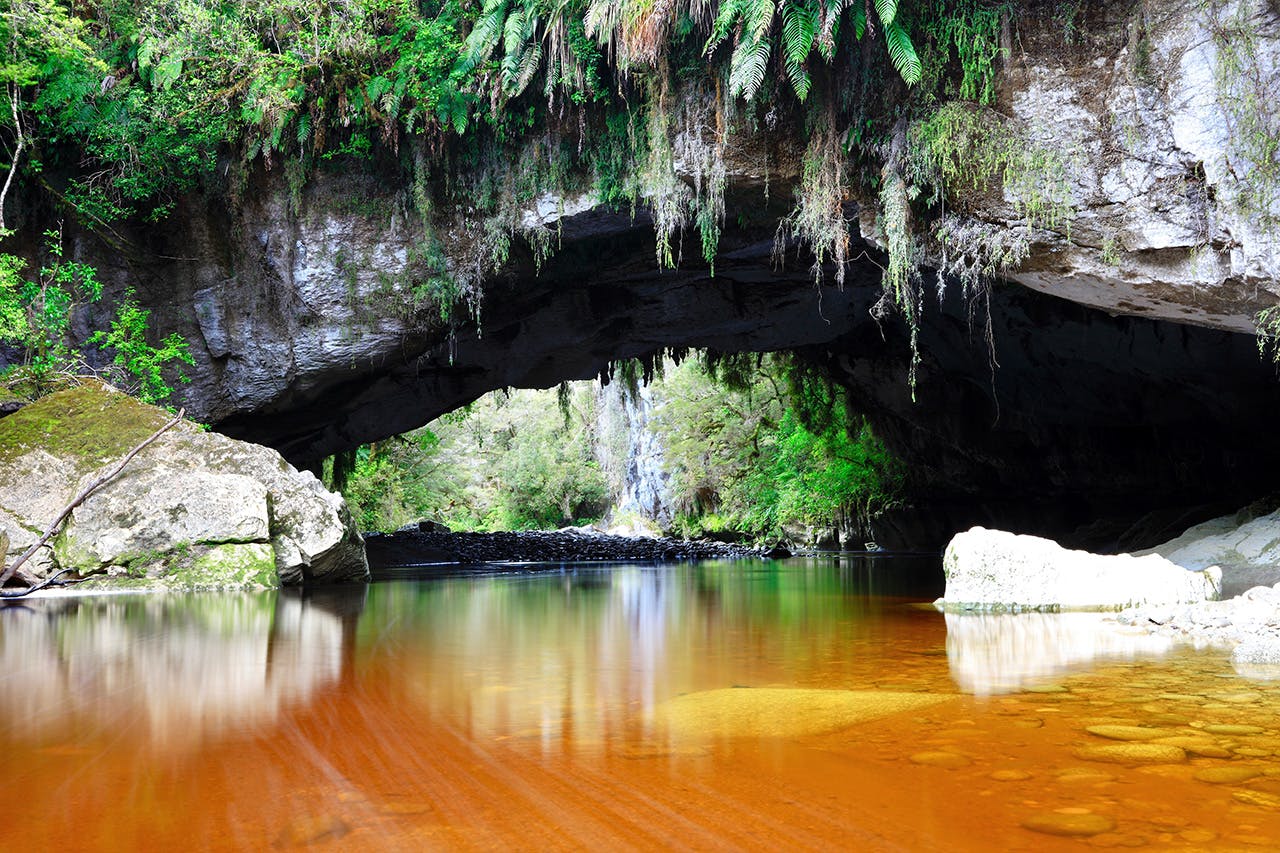
Oparara Arch has been sculpted by the Oparara River. Photo: Richard Rossiter
It’s where limestone meets granite, where flowstone formations meet fossils, where for 350 million years, or so, the Oparara River has sculpted complex caves, arches and tunnels in the limestone laid down as our land drifted, away from the ancient continent Gondwanaland. Base yourself in hospitable Karamea and feel the essence of this special place. Explore easy 1-2hr walks; Oparara Arch, Box Canyon and Crazy Paving Caves (take a torch to spot the weta) and Moria Gate Arch – Mirror Tarn Loop Walk. Look, too, for blue duck and giant powelliphanta snails; heck, you could almost sense a giant Haast eagle flying through here. In fact, the nearby Honeycomb Hill Caves are home to the largest variation of sub-fossil bird bones found in New Zealand, including many which are now extinct; eagle, moa and more. Book a guided tour into this Special Protected Area at the Karamea Information Centre.
Take the family to the Flora
Flora car park is a major gateway to Kahurangi, and close to Motueka. The steep access-road climbs high so your legs don’t have to. The walking tracks are top quality. Little more than an hour up a gentle grade and your kids will find the bush edge and Mt Arthur Hut. Go just beyond for views of Mt Arthur and the sprawling tablelands. Alternatively, 30 minutes in the beech forest gets you to Flora Hut, another hour to Grid Iron Shelter. Pack the bikes, if you like. Pedal the easy track to Grid Iron Shelter and back. (Bikes are permitted all the way through to Barron Flat in the Takaka Valley, but that bit is for serious, single-track riders).
Whether at Flora or Mt Arthur huts (there’s a loop-walk linking them), listen for great spotted kiwi. They’ve been reintroduced here thanks to the pest control work of Friends of Flora, one of New Zealand’s pioneering community conservation groups.
Walk or ride the Heaphy Track
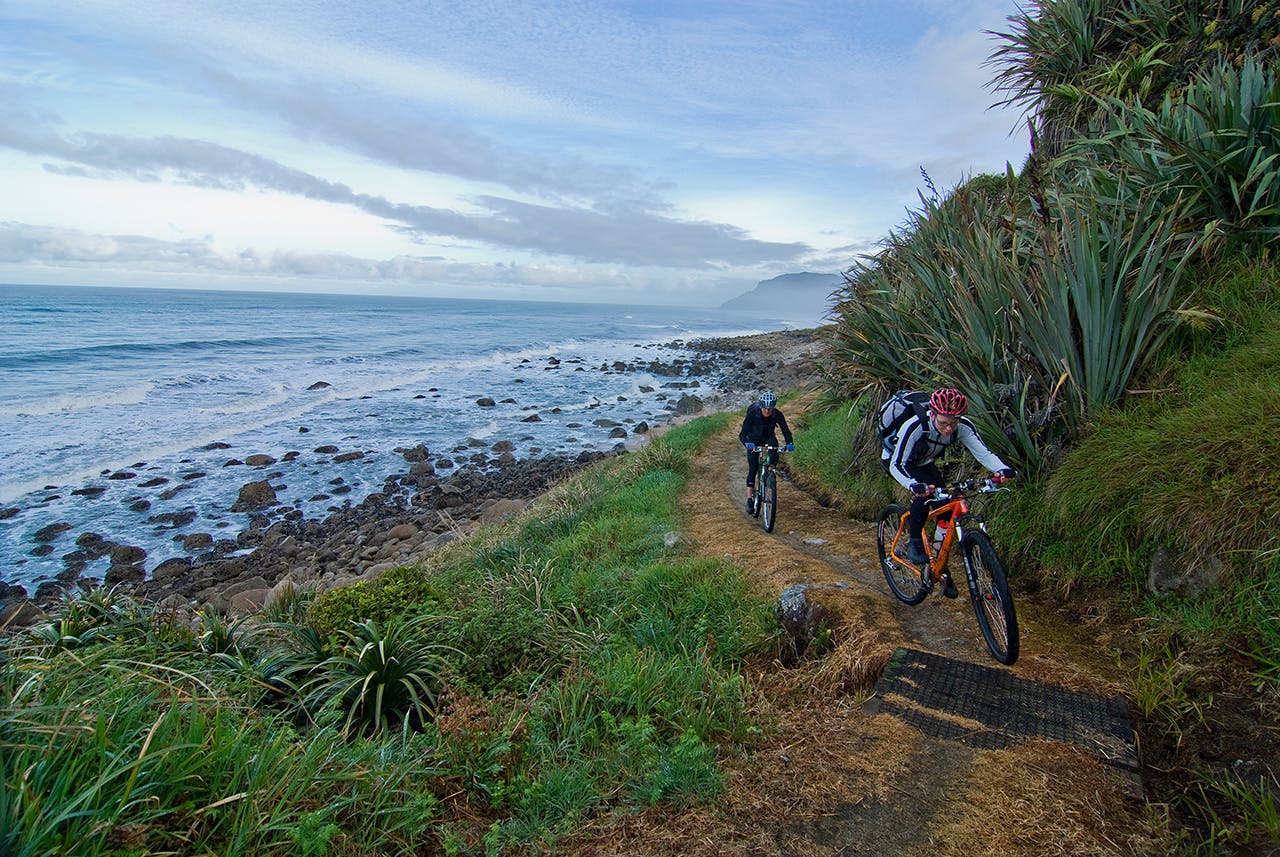
Mt Biking on the Heaphy Track is proving popular. Photo: Dave Mitchell
Not all agree there’s a place for mountain bikes in national parks. The fact is, the Heaphy is one of New Zealand’s most famous, enduring tramping tracks and, for several months of the year (high summer excepted), mountain bikes are allowed on it. It’s also one of our lesser-used Great Walks, so an excellent option for those grumpy about heavy tourist traffic elsewhere. Oh, and it’s stunning and diverse: beech forest in the east, tangled rata/nikau/coastal rain forest in the west, and sprawling across a high plateau in between subalpine forests and the rolling, red tussock downs of Gouland, where the calls of great spotted kiwi pierce the night. Most walkers stay four nights on the 78km track. Following a recent, six million dollar upgrade the huts are as flash as DOC huts get. Consider a winter trip, when the weather is generally more settled.
Marvel at the marble and climb Mt Owen
Not just because the park’s highest peak starred as the Lord of the Rings’ Mines of Moria; in its own right, the spectacle of glaciated marbled kaarst that tumbles around the summit of Mt Owen is worthy of a climb. Views from the 1875m summit are impressive, just ignore the occasional helicopter buzzing movie aficionados in and out. The most popular route, from Courthouse Flat via the new Granity Pass Hut, is a stunner and a great overnight trip.
Rest in a rock shelter
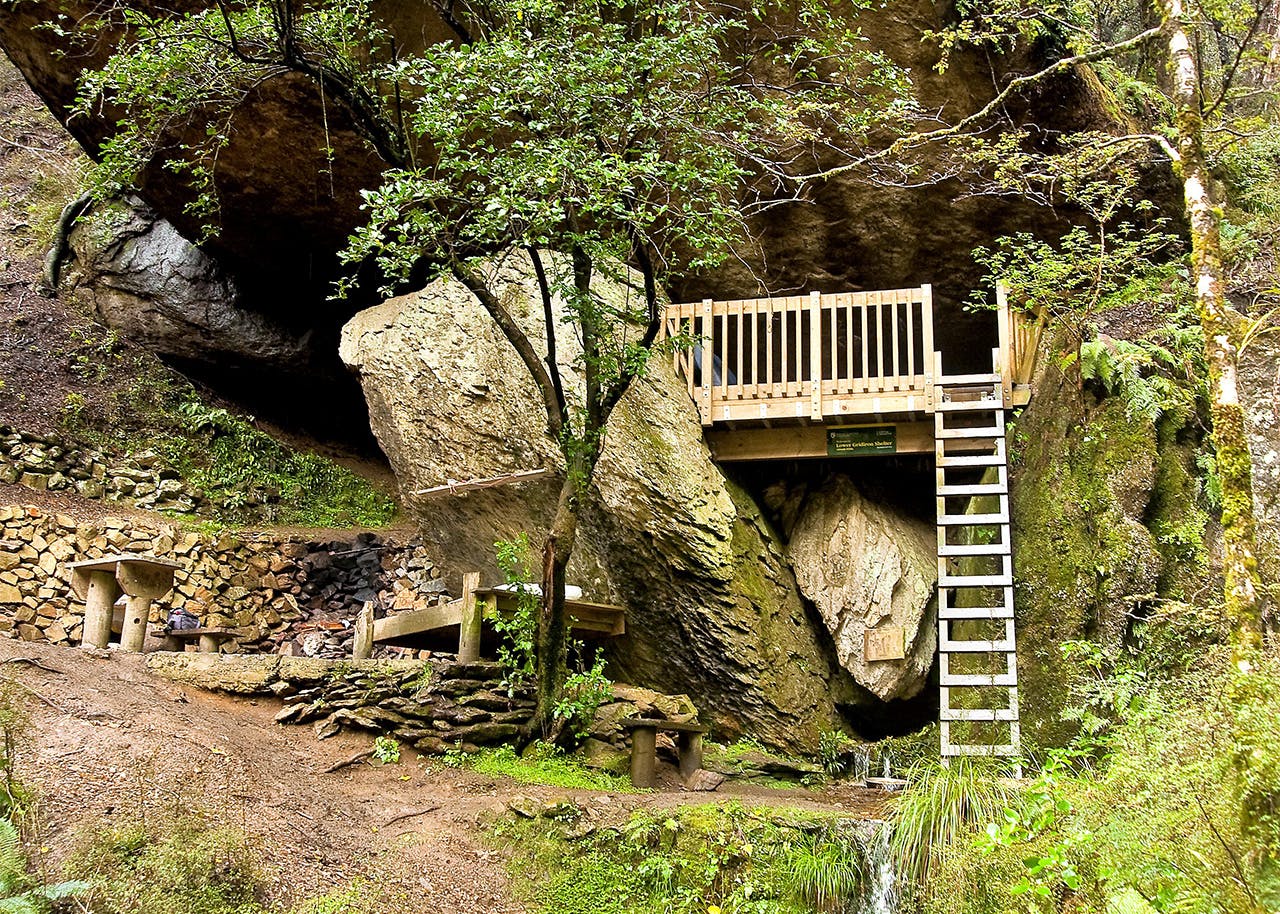
Lower Gridiron Rock Shelter. Photo: Shaun Barnett/Black Robin Photography
Forgot your tent? No worries. Kahurangi is famous for its sculpted caves, arches and outcrops and some of these, helped with a touch of Kiwi inagenuity, have been crafted into cosy overnight shelters. Their novelty and handy location could be just the ticket for enticing the kids into the great outdoors. There’s the Gridiron Rock Shelters (under giant limestone blocks on or near the Flora Track, one a platform, one with door, windows and bunks), Dry Rock Shelter near Salisbury Hut (a wooden platform) and Growler Shelter nearby (tiny platform). Splugeons Rock Shelter, one to two days along the Leslie Karamea Track, requires more effort, but rewards with its cool roll-up blind and views across the park.
Step on up to the Thousand Acre Plateau
….And beyond to the Needle, Haystack and Hundred Acre Plateau; not just evocative place names but with sweeping tussock landscapes, mudstone peaks and steep escarpments to explore. This is more serious tramping country, starting with the three-hour walk to Lake Matiri Hut where river crossings can quickly become impassable in heavy rain. From the lake, a grunt of a 700m climb gets you onto the tussock-covered plateau. Stay at the recently upgraded Poor Pete’s Bivvy or cross the poled plateau (an easy 3-4hr) to Larrikins Creek Hut. The water drops vertically around here; off The Haystack onto the plateau, and off the plateau into the Mokihinui River below. Climb The Needle, for a grand 360-degree view, or onto the Hundred Acre Plateau, to the north. Beware the bluffs, bogs and speargrass!
Consider historic, human endeavour
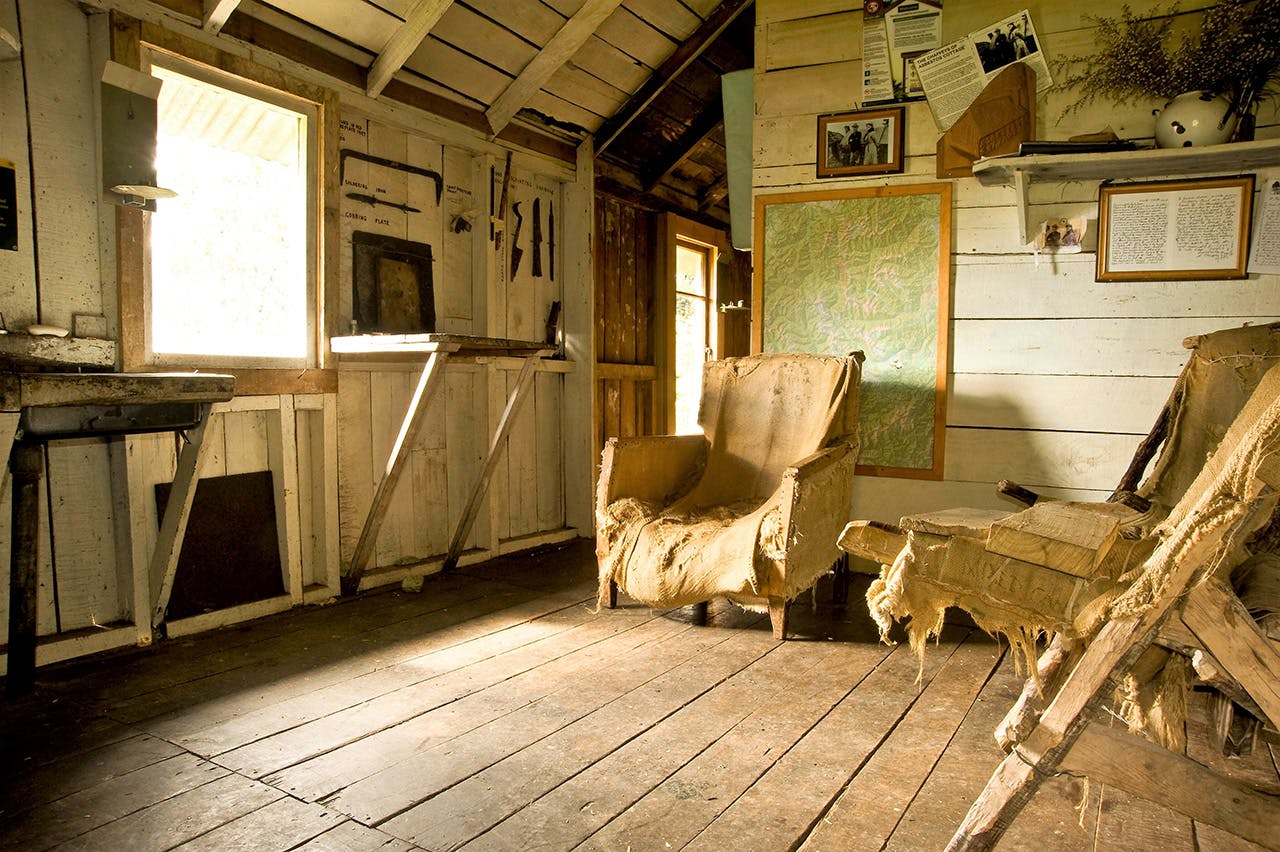
The interior of Asbestos Cottage, home to Annie Fox and Henry Chaffey for 40 years. Photo: Shaun Barnett/Black Robin Photography
Asbestos Cottage, in the Cobb Valley, was built by mining prospectors in 1897. In 1914 runaway lovers and recluses Annie Fox and Henry Chaffey sought refuge here. They stayed for nearly 40 years; Henry mining asbestos and Annie the homemaker. After 20 years, Annie’s abusive first husband died and she was able to marry Henry. Now a park hut, Asbestos Cottage was restored in 1997, in keeping with its heritage. Whether you stay overnight or take a day walk (two hours each way, through beech and manuka forest from Cobb Dam Road), spare some time to forage for currants and gooseberries, remnants of Annie’s garden, and to read her story (displayed inside) of love, forbearance and stoic self-sufficiency.
Explore the new enclaves
In 2016, five enclaves totalling 900ha were added to the national park, most of them around Whanganui Inlet and Westhaven (Te Tai Tapu) Marine Reserve and the coast further south. This was fantastic news: these additions encompass pristine rata forests, primeval tannin-bleached inlets and remote pingao/dune country, and their inclusion in the park ensures unbroken protected status from mountain tops to the sea, from national park to marine reserve.
Kayak the inky, rata-fringed inlets feeding into Whanganui Inlet. Launch your kayak off Dry Road, just past the causeway (you’ll need to catch the high tide). Or take an adventurous coastal walk to the tidal platforms and pingao-covered dunes beyond Kahurangi Point. Stay in the Kahurangi Keeper’s House, now a 25-bed DOC hut, which is a three- to four-hour walk from the end of Cowin Road. (Low tide is essential for river crossings; beware high winds and whipping sand.)
Pack ya rod
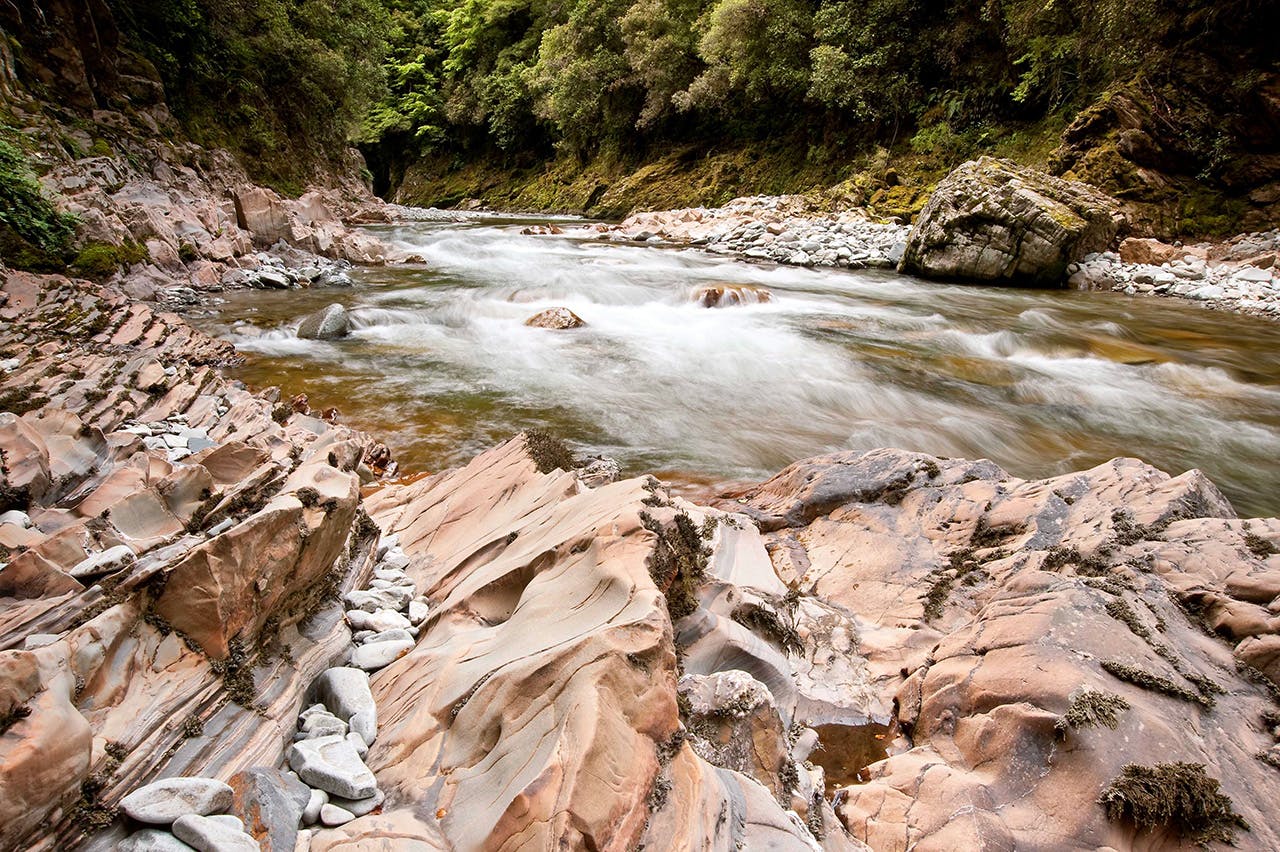
The Wangapeka River is a prime brown trout fishing spot. Photo: Shaun Barnett/Black Robin Photography
Tramping in the park? A telescopic fishing rod could be the difference between a bag of dehy or fresh fish for dinner. The rivers here are world-renown brown trout fisheries. Rich cats staying in high-end lodges helicopter in to fish, so if you’re walking in you surely deserve a share. Not giving away (too many) secrets the Karamea, Leslie and lower Wangapeka are prime spots. Near Roaring Lion Hut, on the edge of the Tasman Wilderness Area, the trout are reportedly like torpedos. But we didn’t tell you that. Don’t forget your fishing licence.
Wait, there’s more!
For more classic tramping options check out the Cobb Valley and its wealth of tracks, huts and campsites, the Leslie-Karamea with new huts and links with the Wangapeka and Mt Arthur Tablelands, the long-loved and still worthy Wangapeka Track (or should that be route, given its recently downgraded DOC status), Mt Luna (a circuit or heading up and back from Stone or Kiwi Saddle Hut in the Wangapeka catchment), and the Anatoki/Waingaro circuit, featuring historic huts and superb views, in from Golden Bay.





